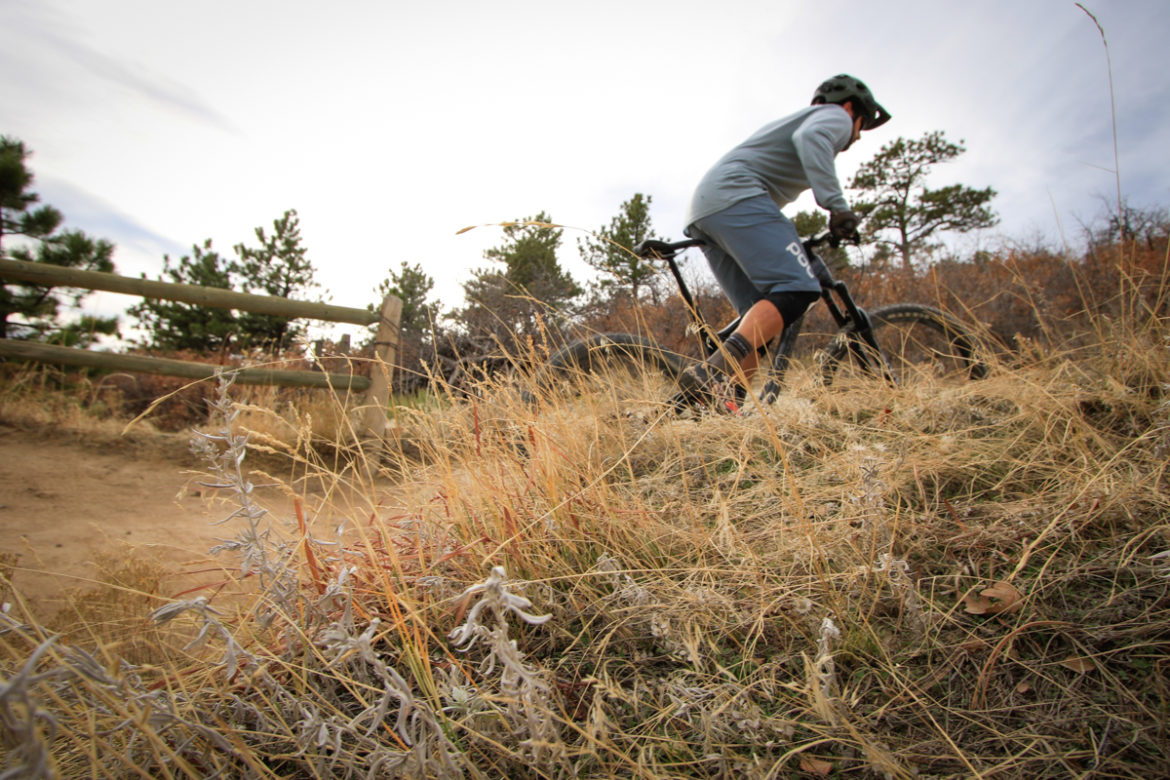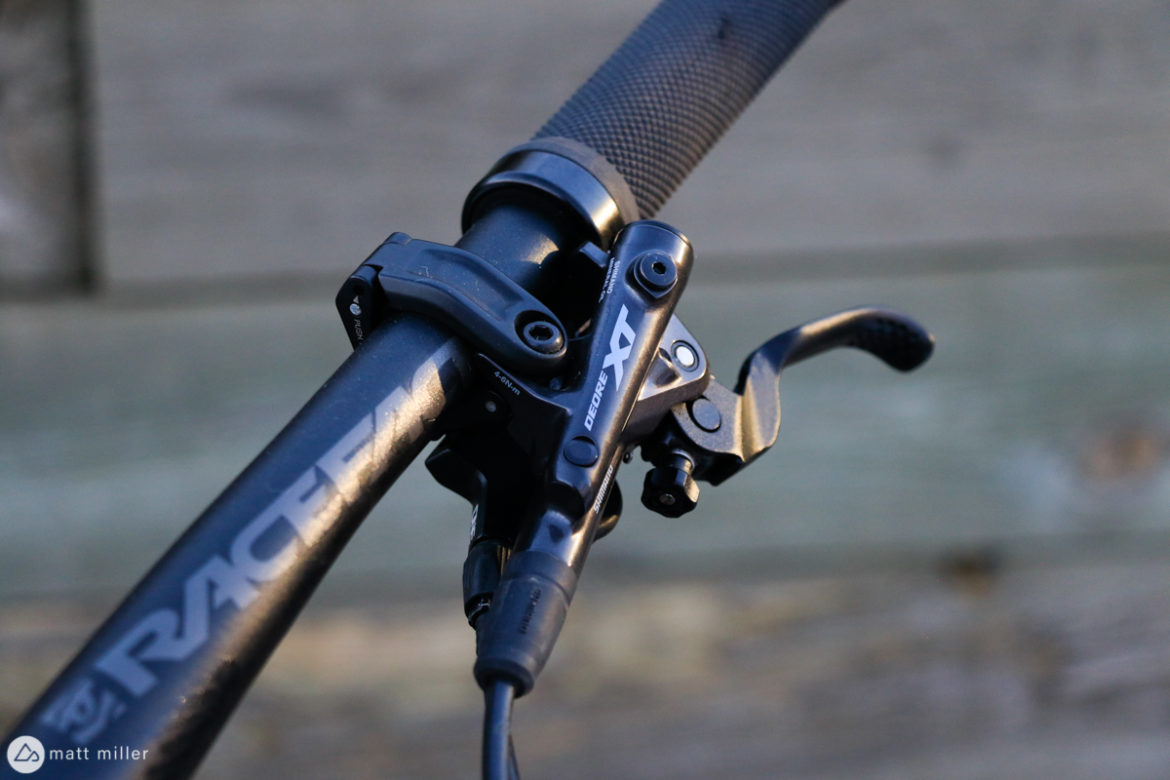
It’s hard to envision a Rocky Mountain lineup that doesn’t have a Slayer sitting between their all-mountain and downhill bikes, but that happened for a period. For 2015 and 2016, Rocky Mountain benched the Slayer for revisions. In 2017, the Slayer returned, with a missile-like aesthetic, the same, big travel numbers (165/170mm), and 27.5″ wheels, answering the call for a more modern enduro bike at the time.
Still, the 2017-19 Slayers never picked up a ton of traction as enduro bikes, with the Rocky Mountain athletes piloting the long-travel 29″ Instinct far more often on the EWS circuit. Overall, 29ers picked up far more momentum around that time, showing up more frequently at professional enduro races.
With enduro and downhill bikes more dedicated to racing, Rocky Mountain seemed to find the most appropriate slot for the newest Slayer. Head to bikes.com, and you’ll find the Slayer listed under the ‘big mountain’ category rather than enduro. For a brand that pioneered freeride with bikes like the Slayer, it seems like it’s back at home, resting sweetly under sheets of loam.
Specs
- Big-mountain/enduro/freeride/park bike (whew)
- Available as 29er w/ 170mm R/F (tested) or 27.5″ w/ 180mm R/F travel
- Dual crown fork compatible
- Ride-4 adjustable 4-position geometry
- 64.5° HTA (29er)
- 76.5° STA (29er)
- Weight: 34.2lbs (M, 29er)
- Price: $3,300 – $8,000 ($6,000 tested, $3,100 for a frameset)
About the 2020 Slayer

For the newest Slayer, the bike saw its first set of 29-inch wheels, which would surely make freeriders from just five years ago both skeptical and a bit furious. Considering how far geometry has come, and how much the overall attitude has changed on 29ers, it only makes sense.
It’s great that buyers have a lot of options with the new Slayer. The bike comes in carbon or aluminum. It comes in two wheel sizes, and it comes in a spread of build kits priced from $3,300 – $8,000. The 29er comes in sizes M – XL and the 27.5-inch comes in sizes S – XL.

The bike that Rocky Mountain sent to test has the $6,000 C70 build, with a carbon front triangle, and aluminum rear. The frame design is similar to other bikes in the Rocky lineup, although with a reinforcement that bridges the top and down tubes for greater strength and stiffness. There is also a bridge between the seat stays for lateral stiffness in the rear triangle.
The kinematics were revised, and anti-squat was dropped from the previous generation to reduce pedal kickback and to increase small bump compliance.
Speaking of small bump compliance, every Slayer build kit is specced with a coil shock. The Slayer builds are also equipped with Double Down casing Maxxis tires, (Aggressor rear, DHF front). It’s obvious that Rocky Mountain chose to equip the bikes for hard downhills, rather than impressing internet trolls with a light build weight. Yes, it means the Slayer is heavy compared to your average mountain bike, but it isn’t the average mountain bike that the majority of riders are going to seek out. It feels a bit weird to praise a brand for making a bike heavier, but considering the capability and intent, it doesn’t seem all that heavy.
Ride impressions

I must say, there is a special place in my heart for the Slayer, as it was my first true full-suspension love. I bought this 2011 edition in 2012 without even considering the size, and ended up with an XS Slayer coated in Canadian colors. I can feel the ache in my back just thinking about the 380mm reach on that bike, but looking back, the geo was pretty progressive, with a 66.5° HTA and a 75° STA, which is just about on par with many trail bikes these days.
I first got the chance to check out the 2020 Slayer shortly after the release, during Crankworx Whistler, and knew I wanted more of it. After two short hours on the bike, I was excited to get a model in for a long-term review.
With the bike parks shutting down soon after I received the bike, I had a short window to get some dedicated gravity laps in. At one of my close-by bike parks, Trestle at Winter Park, which is mostly mellow and not-so-steep, I noticed a few things about the Slayer on the longer, and more moderately graded flow trails that may be obvious. It takes a certain amount of grade to make the Slayer come to life. If the majority of your riding takes place on buffed out, flow trails, like those found at Trestle, you can easily get away with a shorter travel trail bike, and there’s a good chance that you’ll go faster with less travel and less weight. That said, it doesn’t mean that you can’t send away, tabletop after tabletop; it just might take a little more work to get the bike up to speed. I was full of confidence through the air and on fast landings though.

Personally, I found that the Slayer was the most fun to ride on anything steep and chunky. With the 64.5° HTA, and 450mm of reach, as well as a short seat tube, I was always able to get low, and stay upright, behind the handlebars. This made it easy to conquer steep slabs of rock and fall line trails, where the coil shock did great controlling the rear suspension.
The rear wheel tracks straight over bumps and sticks to the ground when you’re bombing down gnarly trail and through corners. The Slayer was astoundingly agile through tight corners, given its large wheels and travel numbers, and it actually has helped me start to develop the Scandinavian flick, due to its whipability – something I’ve always wanted to learn.
The only negative that I noticed while descending, and through corners was a little pedal kickback, usually during steep and rutted switchbacks when I’d rotate the cranks to a “goofy-footed” position on left hand corners. The cranks felt as if they stopped momentarily, before returning to a normal mobile mode. I wouldn’t say that this is something that happens often, as kickback depends on your gearing and speed, but it’s something I noticed a couple of times.
Out of corners and into rocky straightaways, the Slayer hacks away trail, piece by piece. With the combination of its weight, playfullness, pop, and plow-factor, it’s the most confidence-inspiring bike that I have ridden all year, which is reflected in our staff picks.

Surprisingly, the Slayer can kill some climbs too. With a very modern and balanced geometry, and great anti-squat characteristics, it stays nice and upright while climbing. The bike never felt as slack as the numbers would reflect on the geo chart, and even fork-wander was pretty minimal. Bikes like this have become so much more enjoyable to ride uphill over the years, and it seems like the days spent leaning back on enduro couches while sweating gallons are gone.
The pedaling efficiency is definitely there on the Slayer, with minimal bob or squat — it just feels like it takes more energy. It’s obviously far from the ease of a trail bike, but it’s pretty incredible how well the Rocky Mountain pedals. The coil shock only increases traction on rugged climbs and makes clearing loose, chundery, or stacked up rock gardens that much easier.
Component check

The Slayer C70 I rode came with some quality components, none of which I’d seek to replace immediately if I were to buy it. There is room to lighten it up however if a buyer wanted. Going with a lighter wheelset would surely save some weight, but then you’d have to wonder if carbon wheels make sense for your style of riding on this style of bike. The Aggressor and Minion DHF combo is one of my favorites and it suits the Slayer well, especially on my local trails.
The newest, 4-piston Shimano XTs have a ton of power and bite and offered plenty of stopping power. I did notice that the bite point tended to shift here and there, although I could always find it. The OneUp dropper post, with the nicely machined remote sitting next to the front brake was also solid, snappy, and reliable.
The RockShox suspension worked great, and the Lyrik Ultimate is a very smooth feeling fork in almost all manners, from small bumps to big hits. Breakaway force feels on par with Kashima coated forks, and it works smoothly through all of its travel. Hard riders will want to add some volume spacers, as the high speed compression adjustments don’t keep the fork from bottoming out over big jumps, although it hasn’t felt harsh in any way.
Final word

Rocky Mountain’s newest edition of the legendary Slayer continues to impress. It’s big and brawny, but still apt to have fun kicking off rocks, and jumps, and through tight, notchy trails. The Slayer is also a surprisingly good climber, which makes the bike incredibly well-rounded. While it’s certainly no “quiver-killer,” the Slayer will surely take on the job of enduro, park, freeride, and even downhill bike, for most of us.
Watch it in action
⭐️ Find the Rocky Mountain Slayer at Jenson USA and other online retailers.

























1 Comments
Dec 18, 2019